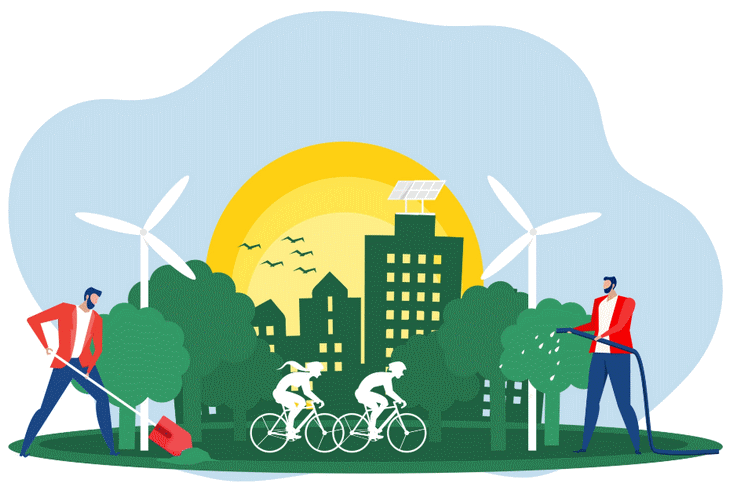A floating city in the Maldives begins to take shape
June 22, 2022 - A city rises from the waters of the Indian Ocean. In a turquoise lagoon just 10 minutes by boat from Male, the Maldivian capital, a floating city big enough to house 20,000 people is being built.
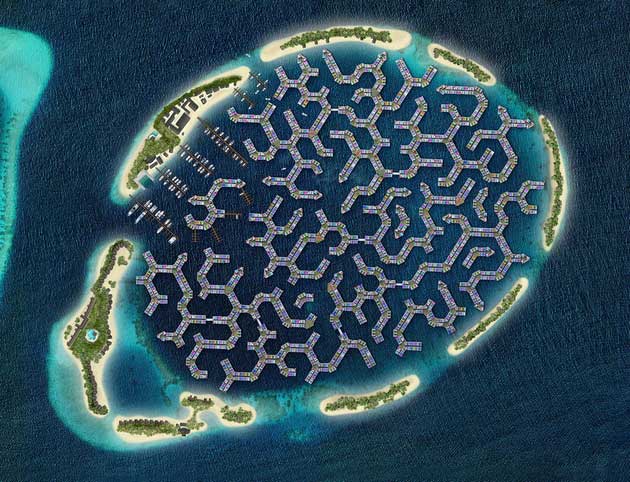 Maldives Floating City
Maldives Floating CityThe city, designed according to a pattern resembling brain coral, will consist of 5,000 floating units, including homes, restaurants, stores and schools, with canals in between. The first units will be unveiled this month and residents will move in early 2024. The entire city should be completed by 2027.
The project - a joint venture between developer Dutch Docklands and the government of the Maldives - is not meant to be a wild experiment or a futuristic vision: it is being built as a practical solution to the harsh reality of sea level rise.
The Maldives, an archipelago of 1,190 low-lying islands, is one of the world's most vulnerable countries to climate change. Eighty percent of the country is less than one meter above sea level, and with a projected rise to one meter by the end of the century, almost the entire country could be under water.
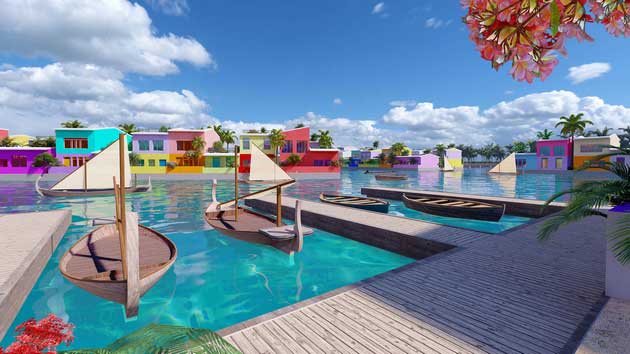 Maldives Floating City
Maldives Floating CityBut if a city floats, it can grow with the sea. This is 'new hope' for the more than half a million residents of the Maldives, said Koen Olthuis, founder of Waterstudio, the architecture firm that designed the city. It can prove affordable housing, great communities and normal cities on the water that are also safe. They (Maldivians) will go from climate refugees to climate innovators.
Hub of floating architecture
Born and raised in the Netherlands - where about a third of the country is below sea level - Olthuis has been close to the water all his life. His mother's side of the family was a shipbuilder and his father comes from a lineage of architects and engineers, so it seemed natural to him to combine the two. In 2003, Olthuis founded Waterstudio, an architectural firm focused entirely on building on water.
At the time, there were signs of climate change, but it was not considered a big enough problem to build a business around it, he said. The biggest problem then was space: cities were expanding, but suitable land for new urban development was running out.
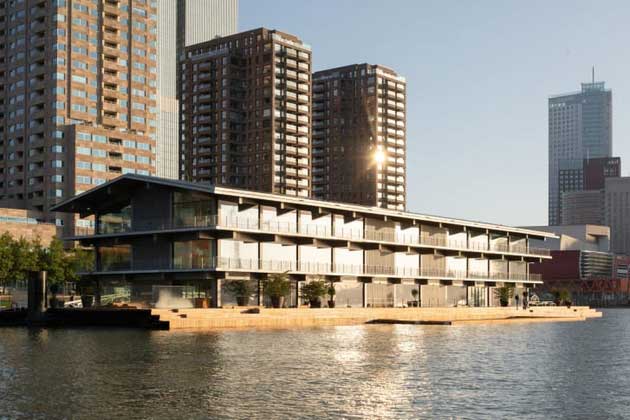 The Global Center on Adaptation head office is anchored in the Nieuwe Maas River in Rotterdam. Credit: Marcel IJzerman
The Global Center on Adaptation head office is anchored in the Nieuwe Maas River in Rotterdam. Credit: Marcel IJzermanIn recent years, however, climate change has become 'a catalyst' that has driven floating architecture into the mainstream, he said. Over the past 20 years, Waterstudio has designed more than 300 floating homes, offices, schools and health centers worldwide.
The Netherlands has become a center for the movement, with floating parks, a floating dairy farm and a floating office building that serves as headquarters for the Global Center on Adaptation (GCA), an organization focused on scaling up climate adaptation solutions.
Patrick Verkooijen, CEO of GCA, sees floating architecture as a practical and economically smart solution to rising sea levels.
'The cost of not adapting to these flood risks is extraordinarily high. 'We have to make a choice: either we defer and pay, or we plan and prosper. Floating offices and floating buildings are part of this planning against the climate of the future.'
Last year, floods cost the global economy more than $82 billion, according to reinsurance company Swiss Re, and as climate change causes more extreme weather, costs are expected to rise. A World resource(s) Institute report predicts that more than $700 billion worth of urban real estate will be affected by coastal and river flooding each year by 2030.
But despite the momentum in recent years, floating architecture still has a long way to go in terms of scale and affordability, Verkooijen said. 'That is the next step in this journey: how can we scale up and accelerate at the same time? There is an urgency for scale and speed.'
A normal city, just floating
The project in the Maldives aims to achieve both, building a city for 20,000 people in less than five years. Other plans for floating cities have been launched, such as Oceanix City in Busan, South Korea, and a series of floating islands in the Baltic Sea developed by the Dutch company Blue21, but none can match this scale and time frame.
Waterstudio's city is designed to attract locals with rainbow-colored houses, wide balconies and sea views. Residents can get around by boat, but they can also walk, bike or ride electric scooters or baby carriages through the sandy streets.
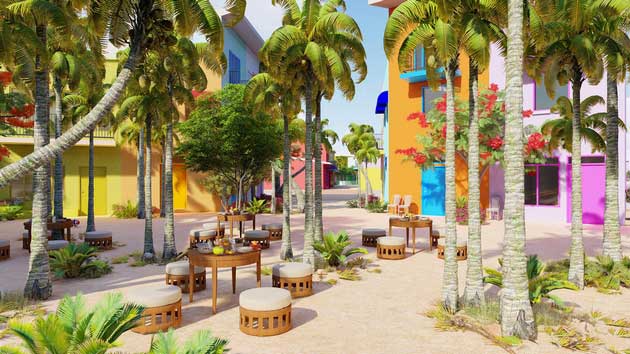 Maldives Floating City
Maldives Floating CityMale is one of the most populous cities in the world, with more than 200,000 people in an area of about eight square kilometers. And prices are competitive with those in Hulhumalé (an artificial island built nearby to combat overcrowding) - starting at $150,000 for a studio or $250,000 for a family home, Olthuis said.
The modular units are built at a local shipyard and then towed to the floating city. Once in place, they are attached to a large underwater concrete hull, which is bolted to the seafloor on telescopic steel poles so that it moves gently with the waves. Coral reefs surrounding the city provide a natural breakwater, stabilizing the city and preventing residents from getting seasick.
Olthuis said the potential environmental impact of the structure had been rigorously assessed by local coral experts and approved by the government before construction began. To support marine life, artificial coral banks made of glass foam were attached to the underside of the city, which he said help stimulate natural coral growth.
Maldives Floating City
The city is intended to be self-sufficient and have the same functions as a city on land. There will be electricity, mainly from solar energy generated on site, and wastewater will be treated on site and reused as fertilizer for plants. As an alternative to air conditioning, the city will use deep-sea cooling, pumping cold water from the deep sea into the lagoon, which helps save energy.
With the development of a fully functioning floating city in the Maldives, Olthuis hopes that this type of architecture will be taken to the next level. It will no longer be 'freak architecture' in luxurious locations commissioned by the super-rich, but a response to climate change and urbanization that is both practical and affordable, he said.
'If I want to make a difference as an architect, we have to scale up,' he said.
Reference(s) .. https://edition.cnn.com
